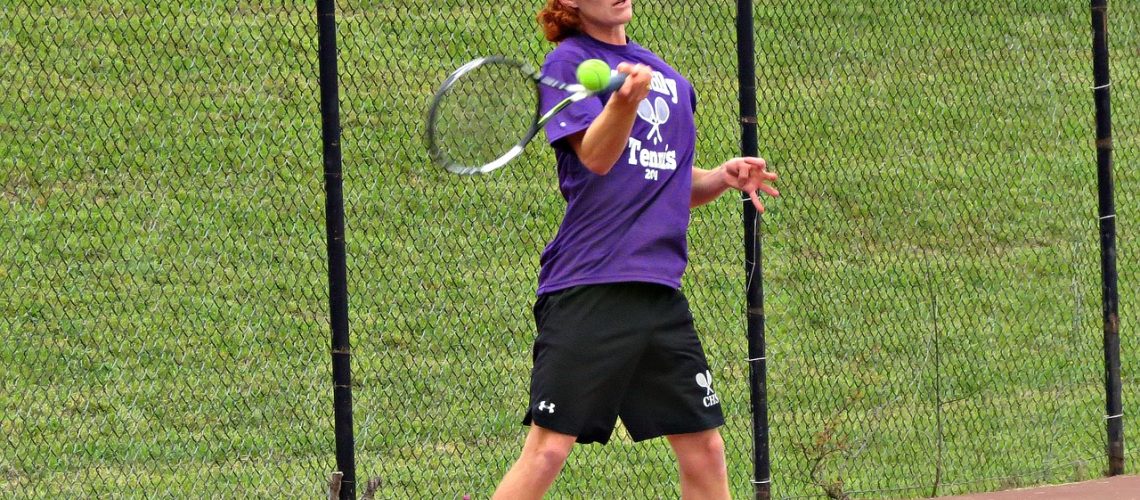We may earn money or products from the companies mentioned in this post.
Introduction

Tennis, often described as a game of precision and skill, revolves around the use of a small but crucial element – the tennis ball The dimensions and characteristics of a tennis ball play a pivotal role in determining the quality of gameplay From its size to its bounce, every aspect is carefully standardized to ensure fair competition across different levels of play
The Importance in Gameplay
Have you ever wondered why tennis players are so particular about the type of balls they use? Well, there’s a good reason for it! The dimensions of a tennis ball directly impact its performance on the court A well-designed ball should provide consistent bounce and speed, enabling players to execute their shots with accuracy
Imagine playing a match with an oversized or undersized ball It would not only affect your ability to hit powerful shots but also disrupt the rhythm and flow of the game That’s why tennis balls are meticulously crafted within specific size parameters to ensure that players can rely on their consistency during intense rallies
Standardization Across Different Levels of Play
In any sport, maintaining fairness and consistency is essential Tennis is no exception Whether you’re playing at a recreational level or competing professionally, using standardized tennis balls ensures an even playing field for all participants
The International Tennis Federation (ITF) has established strict regulations regarding the dimensions and materials used in manufacturing tennis balls These guidelines apply to all levels of play, including junior tournaments, college matches, and prestigious Grand Slam events like Wimbledon or US Open
By adhering to these standards, players can focus on honing their skills without worrying about variations in ball behavior across different tournaments or venues It allows them to adapt quickly and make strategic decisions based on their experience with consistently sized balls
Tennis Ball Diameter: Understanding the Measurements

When it comes to tennis balls, their diameter plays a crucial role in determining their performance on the court The International Tennis Federation (ITF) has established specific specifications for tennis ball measurements to ensure fairness and consistency in the game
International Tennis Federation (ITF) specifications
The ITF sets guidelines for acceptable diameters of tennis balls While there is a range of acceptable measurements, they must fall within certain limits to meet regulation standards This ensures that players can rely on consistent ball size during matches
Within this range, an average diameter measurement is also defined by the IT This average provides a benchmark for manufacturers to follow when producing tennis balls
The role of air pressure in diameter variations
Air pressure within tennis balls can lead to variations in their diameter Pressurized and non-pressurized balls are two types that differ in terms of internal air pressure
Pressurized balls have compressed air inside, which gives them their lively bounce and enhances their flight characteristics The internal pressure affects the size of these balls, leading them to have a slightly smaller diameter compared to non-pressurized ones
In contrast, non-pressurized balls do not contain compressed air and maintain a consistent diameter throughout their use They are often used for recreational purposes or practice sessions where less bounce is desired
Types of tennis balls and their diameter differences, if any
There are different types of tennis balls available that cater to various playing conditions and skill levels These variations can impact the ball’s diameter:
-
Regular duty vs extra-duty balls:
Regular duty balls are designed for use on clay or indoor courts, while extra-duty balls are more suitable for hard or grass surfaces While the diameter remains consistent between these two types, their outer covering and felt density may differ -
Junior training balls:
Tennis balls specifically designed for young players may have a slightly larger diameter to accommodate their skill level and playing abilities -
Foam or soft practice balls:
These softer practice balls often used by beginners or for recreational play might have a different diameter compared to regular tennis balls The aim is to provide a slower pace and reduced impact during practice sessions
Understanding the measurements of tennis ball diameters is essential for players, coaches, and manufacturers alike It ensures fair gameplay, optimal performance, and appropriate ball selection based on specific playing conditions and skill levels
Tennis Ball Manufacturing Process and Its Impact on Diameter

When it comes to constructing a tennis ball, the materials used play a crucial role in determining its quality and performance The two primary components of a tennis ball are the rubber core and the felt covering
Rubber Core Composition
The rubber core is responsible for providing the ball with its bounce and durability It is typically made from a specialized rubber compound that undergoes a precise blending process This composition ensures optimal resilience and consistency throughout the life of the ball
Felt Covering Materials and Manufacturing Techniques
The felt covering on a tennis ball not only provides grip but also influences its flight characteristics High-quality felt is made from tightly-woven fibers, usually consisting of nylon or wool The manufacturing techniques employed during felting, such as pressure treatment and heat setting, ensure that the fabric maintains its integrity even under intense gameplay
Manufacturing Process Steps That Influence the Diameter
The diameter of a tennis ball is critical for maintaining uniformity across different brands and models Several key steps in the manufacturing process directly impact this aspect:
-
Molding Rubber Core Halves:
The rubber core is created by molding two halves together using precision molds The shape and size of these molds directly affect the diameter of the final product -
Joining Rubber Core Pieces:
Once both halves are molded, they are fused together to form a complete rubber core Accurate alignment during this step ensures consistent diameters across all balls produced -
Adhering Felt to the Rubber Core:
The felt covering is carefully attached to the rubber core using adhesive techniques that maintain proper tension This bonding process, when executed precisely, helps maintain the desired diameter
Quality Control Measures to Ensure Consistency
To guarantee uniformity and consistency in tennis ball manufacturing, rigorous quality control measures are implemented:
-
Inspection Procedures:
Each ball undergoes meticulous inspection to ensure it meets specific standards for weight, size, and overall quality This includes manual measurements as well as advanced technological tools -
Tolerances Allowed by ITF Standards:
The International Tennis Federation (ITF) sets strict guidelines on the acceptable tolerances for tennis balls’ diameter and weight Manufacturers must adhere to these standards to ensure fair play during professional matches
In conclusion, the diameter of a tennis ball is influenced by various factors throughout the manufacturing process From the selection of materials to the precision molding and adherence techniques, manufacturers strive to produce balls with consistent sizes that meet international standards
Factors Affecting Tennis Ball Diameter in Real-World Usage

Tennis balls, like any other sporting equipment, experience wear and tear over time This can have a significant impact on their diameter, affecting how they perform on the court One factor that contributes to this is the playing surface Different surfaces, such as clay, grass, or hard courts, can exert varying levels of pressure and friction on the ball, gradually wearing it down and causing its diameter to decrease
Prolonged use also plays a role in the change of a tennis ball’s diameter As balls are played with over time, they undergo constant impact and compression during matches or practice sessions This repeated stress causes the materials inside the ball to compress and compact, leading to a reduction in its overall size
Storage conditions and temperature effects
The way tennis balls are stored can also affect their diameter Optimal storage practices involve keeping them in a cool and dry environment where they are protected from extreme temperatures and humidity Temperature-related changes can influence the air pressure inside the ball, which in turn affects its diameter When exposed to higher temperatures, the air molecules inside expand, causing an increase in pressure and potentially altering the ball’s size
The impact of altitude on tennis ball performance
Altitude is another factor that can have an impact on tennis ball performance At higher altitudes where air density is lower, adjustments may be needed for players to adapt their game accordingly The lower air resistance at high altitudes can cause tennis balls to fly faster through the air and bounce higher than at sea level To counteract these effects, specialty high-altitude tennis balls are sometimes used that have been designed specifically for these conditions
Useful Links

The diameter of a tennis ball is 6.58 cm. What is the volume?
How to measure the diameter of a tennis ball
The diameter of a basketball is approximately 9.5 inches …
The diameter of brand of tennis balls is approximately …
The diameter of a tennis ball would be about0.5mm …
JUMBO Tennis Ball – 8-inch diameter
EP0170782A1 – Large-diameter tennis ball
Tennis Balls, 2 1/2″ Diameter, Rubber, Yellow, 3/Pack
A regulation tennis ball has a diameter of 2.5 inches. Find …
Solved The official diameter of a tennis ball, as defined by
Tennis Balls, 2.5″ Diameter, Yellow, 3/Pack
1200 mm – 4 foot diameter tennis ball
If the diameter of the tennis ball is 2.6 inches, what is its …
The official diameter of a tennis ball is 2.575 inches. …
Five tennis balls, diameter 62 mm are placed in cylindrical …
Volume of a Sphere keys.pdf
Table Tennis Ball Sizes






